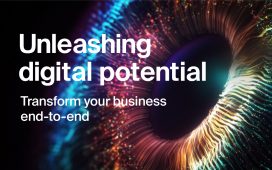Not only is the pace of change accelerating, the target is also moving faster, says Waseem Afzal.
You’d think that by now we’d be used to all this change; it certainly has been coming at us for some years. All that talk about the changing consumer landscape and the adoption of technology isn’t new and for the most part we’ve embraced this evolution quite well. That said, it certainly isn’t the time to get complacent and take our eyes of the ball as more change, and a more radical one at that, is right around the corner, leading brands and agencies to transform further still.
Advertising has long been based on the ability to deliver a message to a target audience, generally the larger the better. Even though consumers spend more time with more media on more devices, achieving that mass audience is not only increasingly hard, it’s also more and more expensive. Consumers are more selective, their behaviour is more fragmented and their attention span becomes shorter. Choice prevails. Moving into the future, this disruption will continue to influence how consumers interact not only with their peers but also with brands.
The continued advancement of technology has been instrumental in rebalancing the power dynamic from marketers to consumers, creating a daunting challenge for brands to not only be, but also stay, innovative. It has also removed a great deal of approximation in the way brands approach their consumers, giving them the ability to target the most profitable profiles rather than just achieving scale. But reaching and attracting consumers isn’t enough and the question becomes what brands can do to forge a more powerful, deeper and seamlessly natural connection with their consumers.
Brands have embraced engagement wholeheartedly, for it represents the middle point between the simple awareness on the one hand and loyalty on the other. The response to content put out by brands, the expression of appreciation and endorsement on an almost 24/7 basis, is the best we’ve had so far and yet there are signs that ‘engagement’ as a metric may not last as long as awareness. The hype cycle is accelerating and after the early stages of excitement, innovations reach Gartner’s trough of disillusionment, following a slow pick-up towards a plateau. This seems to describe the situation with social media, at least in the more mature parts of the media world. But what’s next?
At this year’s OMD Predicts, the answer given was ‘creative utility’, in other words brands being more useful for consumers, beyond their products and services. People are willing to engage in a relationship with brands as long as the value equation is more balanced. A number of brands, media companies and marketing agencies are already jumping onto this bandwagon as the need to evolve and adapt amplifies. Empowered by automation, media agencies will be able to focus more still on innovation and strategic input in order to provide consumers with a more enriching brand experience.
We’ve already made the first steps. Agencies are building their own creative war rooms, OMD’s Mission Control is one example, helping brands identify and create more useful, relevant and real-time pieces of content that aren’t self-serving promotion or an extension of a TV campaign.
Current examples of brands being useful are often technology-based but not always. At their heart, there is a deep understanding of consumers’ aspirations, needs and desires. More and more brands will invest in meaningful content to enhance their “storytelling” and brands that are most comfortable in involving consumers in their story-telling will be the most successful. However, the device diversity and the context of consumption will be essential factors to engage with the modern consumer.
With brand communication changing so quickly and so deeply, how do we, agencies, need to evolve? It’s all about timing. Time has compressed so much that agencies can only drive value and differentiation for their brands if they reinvent fast and move as quickly as the consumers.
The old operational model has already shown its cracks and silos are breaking all around us, between creative and media for example, as we now find new collaborative approaches and processes. The old dichotomy between media types is being replaced by a far more integrated, media-neutral method. The convergence of media, technology and creative will fuel the new era of brand marketing, one in which strategists from different disciplines will collaborate to define strategies and innovate, while the execution will be done in more automated manner. Our value system will evolve as a result. If we prioritise our innovative mindset, eliminate barriers to technology and harness both big data and little brother properly, we are poised for huge growth. If we do this right, the question of which half of an advertising budget is wasted will no longer be asked and our contribution to a company’s success will easily be ascertained. This will squarely change our economic conversations with our clients and provide the multiplier effect their brands and businesses deserve. In many ways, this is just the beginning. The promise of big data and technology is now starting to come to fruition.
(Waseem Afzal is head of digital at OMD)










